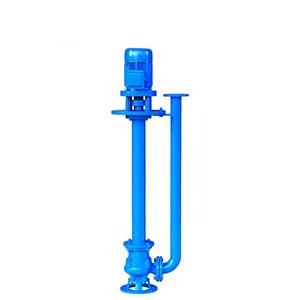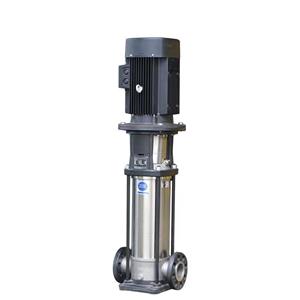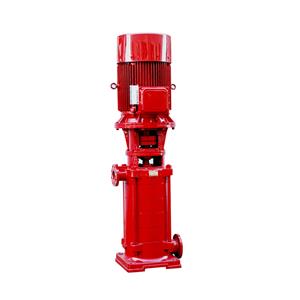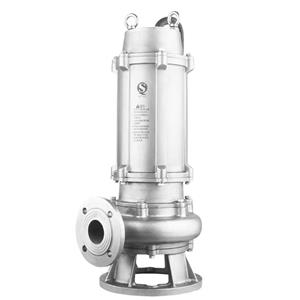Company news
-
Improving the energy efficiency of centrifugal pumps is a multi-faceted process involving proper selection, regular maintenance, system optimization, and advanced technologies. By implementing these energy-saving methods, organizations can significantly reduce operational costs, extend equipment lifespan, and contribute to a more sustainable future. With careful planning and commitment, the potential savings can be substantial and enduring.
-
Proper installation of a centrifugal pump unit is essential to ensure its efficiency, reliability, and longevity. By following the steps outlined in this guide, you can avoid common issues such as misalignment, vibration, and premature wear. Regular maintenance and adherence to manufacturer guidelines will further enhance the pump’s performance and service life.
-
An air-operated diaphragm pump failing to pump water can stem from various causes, ranging from air supply issues to component wear. By systematically troubleshooting and addressing these potential problems, you can restore the pump’s performance and minimize downtime. Regular maintenance and adherence to manufacturer guidelines are essential for ensuring the long-term reliability of AODD pumps.
-
Circulation pumps are indispensable in a wide variety of applications, offering a blend of efficiency, reliability, and versatility. With advancements in technology, these pumps are becoming increasingly energy-efficient, quiet, and user-friendly, making them suitable for both simple and complex systems. By understanding their features, you can make informed decisions to optimize your system’s performance and reduce operational costs.
-
The primary difference between explosion-proof motors and regular motors lies in their design, safety features, and intended operating environment. Explosion-proof motors are designed for use in hazardous environments where there is a risk of explosive gases, vapors, or dust, and are built with enhanced safety features to prevent ignition and ensure the safety of the surrounding area. In contrast, regular motors are intended for use in non-hazardous environments and lack the specialized features necessary to operate safely in explosive atmospheres. Selecting the right motor for an application depends on the environment in which it will be used. For industries dealing with hazardous materials or operating in explosive atmospheres, explosion-proof motors are a necessity. For general industrial applications, regular motors are often sufficient and more cost-effective. Understanding the differences between these two types of motors is crucial for ensuring safety, efficiency, and compliance with safety regulations in various industries.
-
When choosing a pump for handling nitric acid, the key considerations include the material of construction, pump type, flow rate requirements, and safety features. Centrifugal pumps are ideal for larger, continuous flow applications, while diaphragm and peristaltic pumps are better suited for handling smaller quantities or more hazardous scenarios. Gear pumps offer precise flow control but may be prone to clogging, while diaphragm and peristaltic pumps offer excellent chemical resistance and leak protection. Ultimately, the right pump for nitric acid will depend on your specific operational needs, the concentration of nitric acid, and the safety requirements of your plant. By carefully selecting a corrosion-resistant pump and incorporating the necessary safety features, you can ensure safe, efficient, and reliable handling of nitric acid in your chemical processes.
-
Pumps for high-viscosity fluids in the chemical industry need to be specifically designed to handle the challenges posed by thick liquids, such as increased resistance to flow, high energy requirements, and wear. Positive displacement pumps, including gear pumps, progressive cavity pumps, diaphragm pumps, and peristaltic pumps, are often the best choices for handling these fluids due to their ability to maintain consistent flow and generate high pressure. When selecting a pump, it is essential to consider the fluid’s viscosity, temperature, presence of solids, and the required flow rate. By choosing the right pump and maintaining it properly, industries can ensure the reliable and efficient transport of high-viscosity fluids, reducing operational downtime and prolonging the lifespan of their equipment.
-
Selecting the right pump for high-viscosity liquids is a critical decision that impacts the efficiency, reliability, and cost-effectiveness of your pumping system. Positive displacement pumps, such as gear pumps, progressive cavity pumps, and diaphragm pumps, are often the best choice for handling thick, viscous fluids. These pumps offer the ability to handle higher pressures and thicker liquids, ensuring smooth flow and minimal risk of clogging. It’s important to consider the fluid’s viscosity, temperature, shear sensitivity, and the presence of solids when making a pump selection. Regular maintenance and proper installation will also help maximize pump performance and longevity, reducing operational costs and downtime. By carefully selecting and maintaining the right pump, industries can ensure efficient pumping of high-viscosity liquids, improving process efficiency and reducing wear and tear on equipment.
-
Incorporating larger, wider blades, specialized materials, and precise tolerances can help overcome the challenges posed by high-viscosity fluids, ensuring smooth operation even under demanding conditions. Additionally, adjusting the impeller design to suit the specific characteristics of the fluid being pumped can lead to significant energy savings, reduced maintenance costs, and improved overall system performance. As the chemical industry continues to evolve, advancements in impeller design will remain essential for effectively handling high-viscosity fluids.
-
The fluid being pumped plays a fundamental role in the lifespan and performance of chemical centrifugal pumps. Factors such as the corrosiveness, abrasiveness, viscosity, temperature, and chemical compatibility of the fluid all influence the wear and tear on the pump components. To maximize the lifespan of centrifugal pumps, it is essential to select the right materials, design, and operating conditions based on the properties of the fluid. Regular maintenance and monitoring, including checks for wear, leaks, and efficiency, can further extend pump life. By understanding the relationship between the fluid and the pump, operators can ensure reliable, long-term operation of centrifugal pumps in chemical processing environments.




